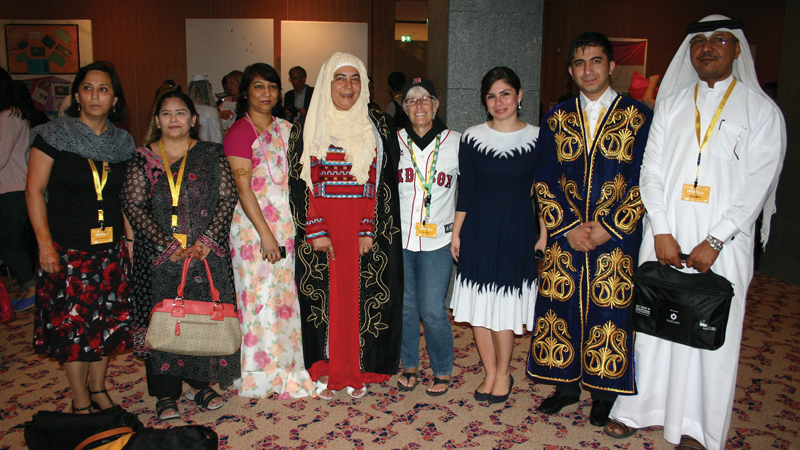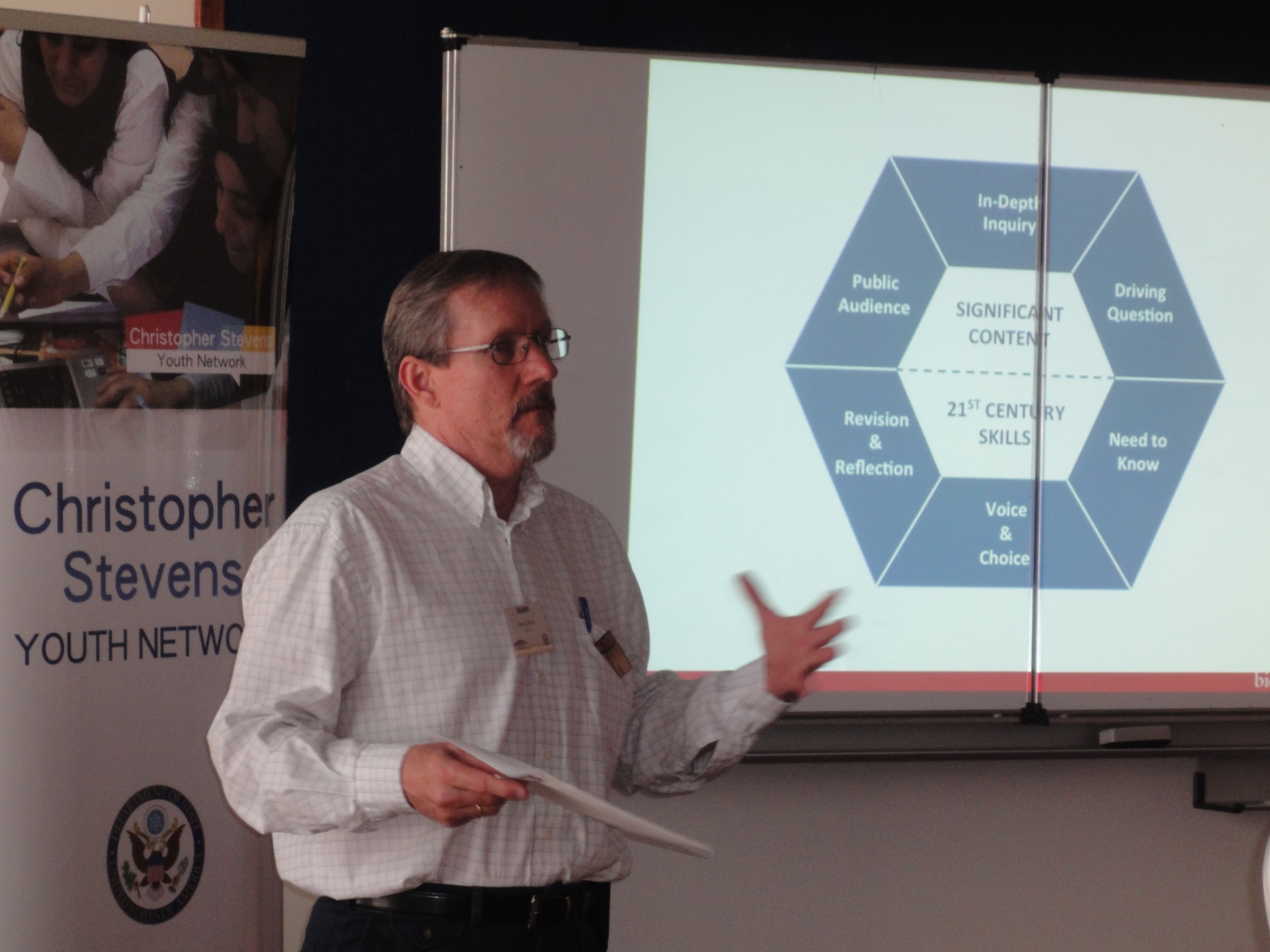
What is Global Project-Based Learning?
In this module, you will learn the key components of project-based learning (PBL) as a teaching method, drawing on iEARN’s model for Global Project-Based Learning with research and resources from PBL Works (formerly known as The Buck Institute of Education), a leader in developing and sharing PBL best practices. This module will lay the groundwork for you to conduct engaging projects that align with content standards and curriculum, address real world challenges, and engage students with people outside of their classroom.
GLOBAL PBL
In global project-based learning, students are involved in individual and collaborative work to explore real-world problems. Students participate in projects and practice an interdisciplinary array of skills from math, language arts, geography, science and technology.
Through global project-based learning, youth acquire skills in critical thinking and cross-cultural awareness while connecting their learning to real world issues. This approach has many benefits for students, including:
- Deeper knowledge of subject matter;
- Increased motivation, creativity, and innovation;
- Improved research and problem-solving skills;
- Greater awareness and exploration of community issues and future careers;
- Engagement with peers, adults, and community members outside of the classroom.
“Essential Project Design Elements” of Gold Standard PBL
In project based learning, academic content and skills are covered as students explore issues and challenges, leading to a final product as an authentic display of their learning. PBLWorks describes Seven Essential Project Design Elements for in-depth, meaningful project-based learning:

- Challenging Problem or Question
A successful project begins with an identified problem to solve or question to answer. Open-ended questions focus students’ work and deepen their learning by framing important issues, debates, challenges or problems. - Sustained Inquiry
Inquiries and investigations are an active, in-depth process that take time. In this sustained process, students ask questions, search for answers, ask more questions and arrive at conclusions, leading them to solutions to their identified problem. - Authenticity
Authenticity increases students’ engagement and motivation. A project is authentic when students are solving real world problems, use real world processes and tools, have real life impact on others, or connect personal to a students’ own concerns, interests, cultures and identities. - Driving Question
Open-ended questions focus students’ work and deepen their learning by framing important issues, debates, challenges or problems. - Student Voice and Choice
Having a say in a project creates a sense of ownership in students; they care more about the project and work harder. Students learn to work independently, take responsibility, and express in their own voice. Students can have ownership in a project to varying degrees – from determining guiding questions, to decided how to implement the project, to selecting the project itself. - Reflection
Through a project students and teacher should engage in meaningful reflection, reflecting on the content knowledge gained, skills gained, as well as the process itself. - Critique and Revision
Students learn to give and receive feedback in order to improve the quality of the products they create, and are asked to think about what and how they are learning. - Public Product
Project Based Learning begins with the vision of an end product or presentation. This creates a context and reason to learn and understand the information and concepts. Students present their work to other people, beyond their classmates and teacher – in person or online. This increases students’ motivation to do high quality work, and adds to the authenticity of the project.
Credit: PBL Works – Buck Institute of Education
Project Based Teaching Practices: In addition to the recently enhanced model of PBL called “Gold Standard PBL,” PBLWorks has created Project Based Teaching Practices. The Project Based Teaching Practices expand on what it means to implement PBL well, beyond designing the project.
Key Components of Global PBL
Within a global project, students enhance critical thinking skills, apply learning to real problems, take action in local communities, and develop both cross-cultural awareness and global citizenship.
Global Projects through iEARN are:
- Initiated and designed by teachers and students;
- Built on relationships with international partners;
- Conducted through interactions with an audience of global peers;
- Driven by the creation of a collaborative final product.
Since each classroom and school environment is different, global projects can look different in each participating classroom as teachers adapt them to their students’ needs and available resources. In order to effectively collaborate across various educational systems, global projects are initiated and designed by teachers and students in the network to relate to local issues while meeting their own curriculum needs.
 A key to success in a global project is building effective relationships with educators around the world. Most educational systems do not emphasize or even encourage collaborative curriculum project work – even within the same school. Therefore, it is extremely important to establish relationships among teachers to share the difficult task of collaborating on projects across diverse educational systems, time zones and schedules, cultural differences, linguistic obstacles, and in the absence of in-person communications.
A key to success in a global project is building effective relationships with educators around the world. Most educational systems do not emphasize or even encourage collaborative curriculum project work – even within the same school. Therefore, it is extremely important to establish relationships among teachers to share the difficult task of collaborating on projects across diverse educational systems, time zones and schedules, cultural differences, linguistic obstacles, and in the absence of in-person communications.
Global projects create an authentic audience for students because they involve collaborating with students in another country; this audience plays a key role in student motivation. Just as teachers must build relationships with partner teachers in the planning process, teachers must also plan how students will communicate and engage to build collaborative relationships with their peers around the world.
Global projects involve a collaborative final product or exhibition of the learning that has taken place as part of the project work. These might include electronic or print publications, websites, reports, campaigns, presentations and many other examples that demonstrate what youth have learned from the project.
>> Top
“Project planning should be realistic. The project should not be too wide in its objective and outcomes and should be simple and student oriented. For successful completion of a project, time must be given great consideration.”
~ Riffat, Teacher Trainer, Qatar
TYPES OF PROJECTS
Teachers around the world engage their students in different ways through global project-based learning. Some teachers use projects throughout the year as a primary way to organize their curriculum while others will use PBL occasionally. In iEARN, global projects vary in length, depth, and scope to meet diverse classroom needs.
-
- Short-term Projects: These projects may take place during a set season of the year with a stated start and end date (Holiday Card Exchange) or a set date (Global Youth Service Day, Talking Kites);
- Ongoing Projects: These projects run continuously, year after year;
- Learning Circles: A learning circle is made up of a group of 6-8 classes who form a virtual classroom. The groups remain together over a 3-4 month period working on projects drawn from the curriculum of each of the classrooms and organized around a selected theme.
Projects vs. Project-Based Learning
Projects can take many different shapes, sizes and scopes. In many traditional class projects, teachers cover academic content through lectures, readings, and class exercises and then students are assigned a project to show what they learned. For example, students may be asked to create a poster, presentation, or report as a group or individually to show their learning. Students then present their final projects in class and are tested on the content at the end of the unit.
In project-based learning, projects drive the everyday teaching and learning activities. Students take ownership of their projects from the beginning and help direct the process and determine outcomes. Class assignments, group work, lectures, readings, and other instructional activities help students answer project-related questions and develop their final display of learning. In global project-based learning, students work with their peers around the world on the research, planning, development, and presentation of their project work.
![]() Project Snapshot: Finding Solutions to Hunger
Project Snapshot: Finding Solutions to Hunger
[table id=1 /]
>> Top
“I’ve seen a number of changes in my students since we started project-based learning. I can see how eager they are to finish their work and they had not been like this before. Now it’s an intrinsic motivation; it comes from within.”
~ Alshaima, Classroom Teacher, Egypt
NEXT STEPS
In this module, you identified the skills that students gain through participation in global projects-reviewed PBLWorks; “Essential Project Design Elements” for project-based learning, and learned some of the main components that characterize collaborative projects. The additional articles and links included in the resources section will help expand your understanding of PBL and conducting projects with global peers.
The next module will guide you through several steps in developing a collaborative project plan. As you brainstorm your project idea and connect with other educators to develop your plan, keep the key components of global PBL in mind. While teachers with advanced experience in project-based learning will incorporate many or all of the “Essential Project Design Elements” into their class projects, we advise teachers who are new to global PBL to start small and to slowly introduce new components and activities to students.
>> Top